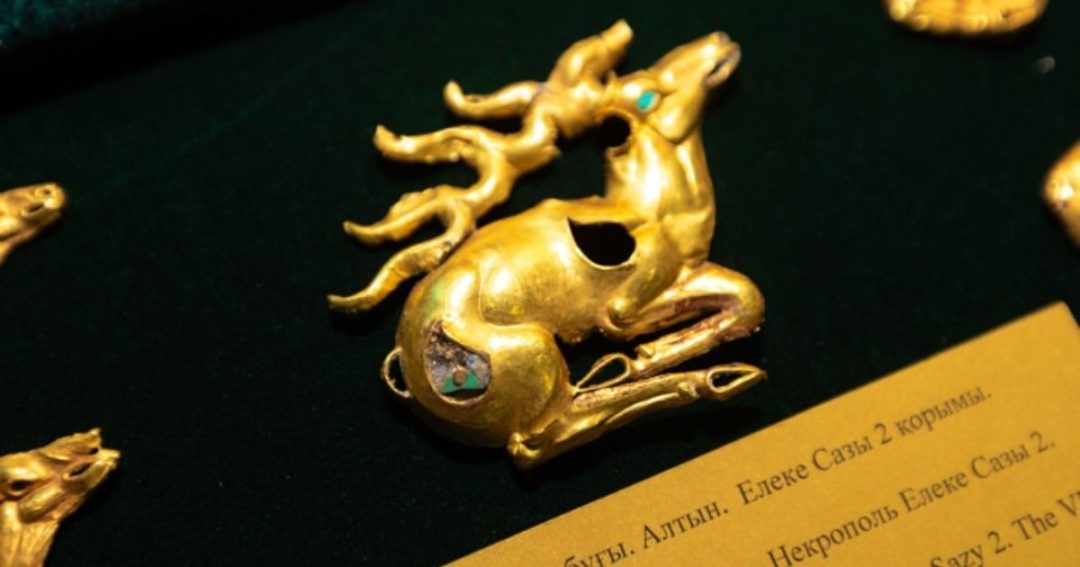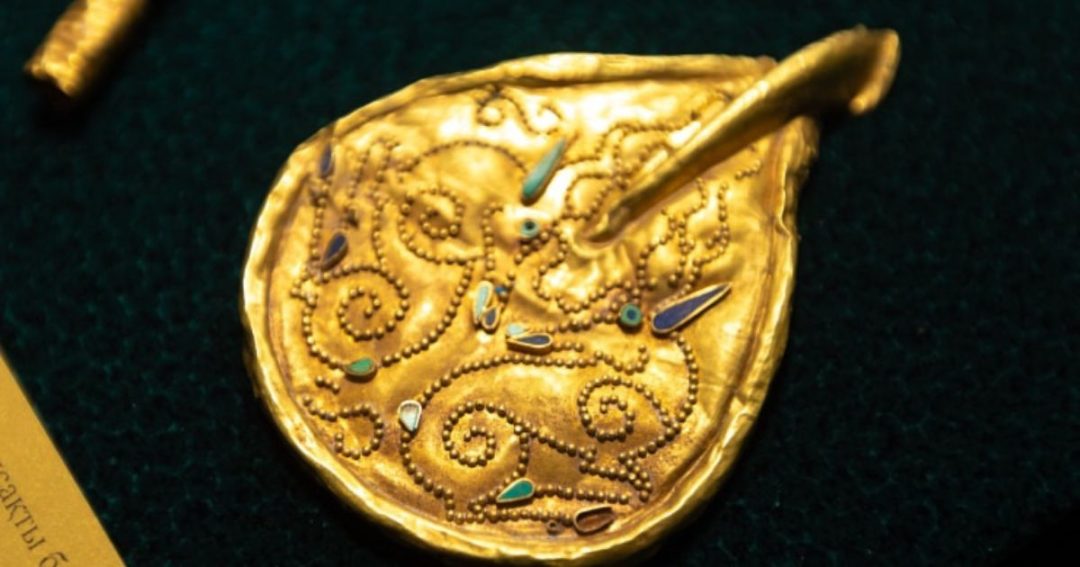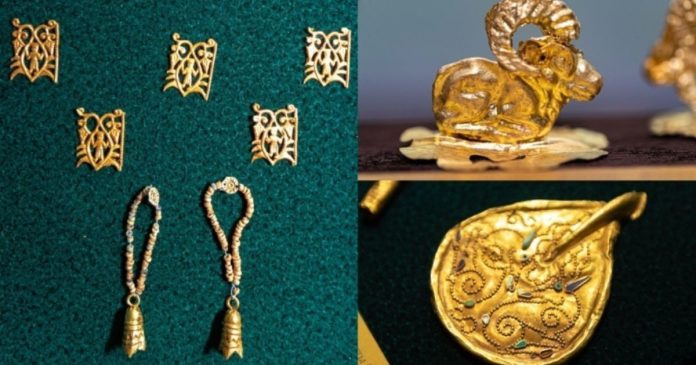Archaeologists from Al-Farabi Kazakh National University have discovered a series of gold artifacts from the Saka period (8th–3rd centuries BCE). The excavation took place in the Uyghur District of the Almaty Region, southern Kazakhstan. Researchers recovered around 30 objects from a burial mound (kurgan), including rings, pendants, necklaces, and buckles. Their initial analysis focused on six items, all showing features linked to high-status individuals.
Dr. Dosbol Baikonakov, director of the archaeological expedition, stated that the artifacts likely date to the 4th–3rd centuries BCE. He explained that, although many burial mounds were looted in antiquity, this one remained largely intact. Its preservation suggests the burial belonged to a high-ranking individual, possibly a political or military leader. Researchers also consider the possibility that the site holds another figure similar to the ‘Golden Man.

Archaeologists discovered the ‘Golden Man’ in 1969–1970 near Issyk, east of Almaty. They uncovered the remains of a Saka warrior dressed in elaborate gold attire and a distinctive pointed headdress. The figure later became a national symbol of Kazakhstan and now resides in the State Museum of Gold and Precious Metals.The newly unearthed ornaments bear notable stylistic and material similarities to those from the earlier discovery, strengthening the potential association.

The significance of the ‘Golden Man’ extends beyond national heritage; in 1997, Kazakhstan’s first President, Nursultan Nazarbayev, gifted a replica to then United Nations Secretary-General Kofi Annan. It now remains on display at the UN Headquarters in New York.

This discovery adds to the growing evidence of elite Saka burial practices. It highlights the ongoing archaeological potential of the Almaty Region. Researchers expect that further excavations and interdisciplinary studies will provide insights into the sociopolitical structure and material culture of Saka societies in Central Asia.

